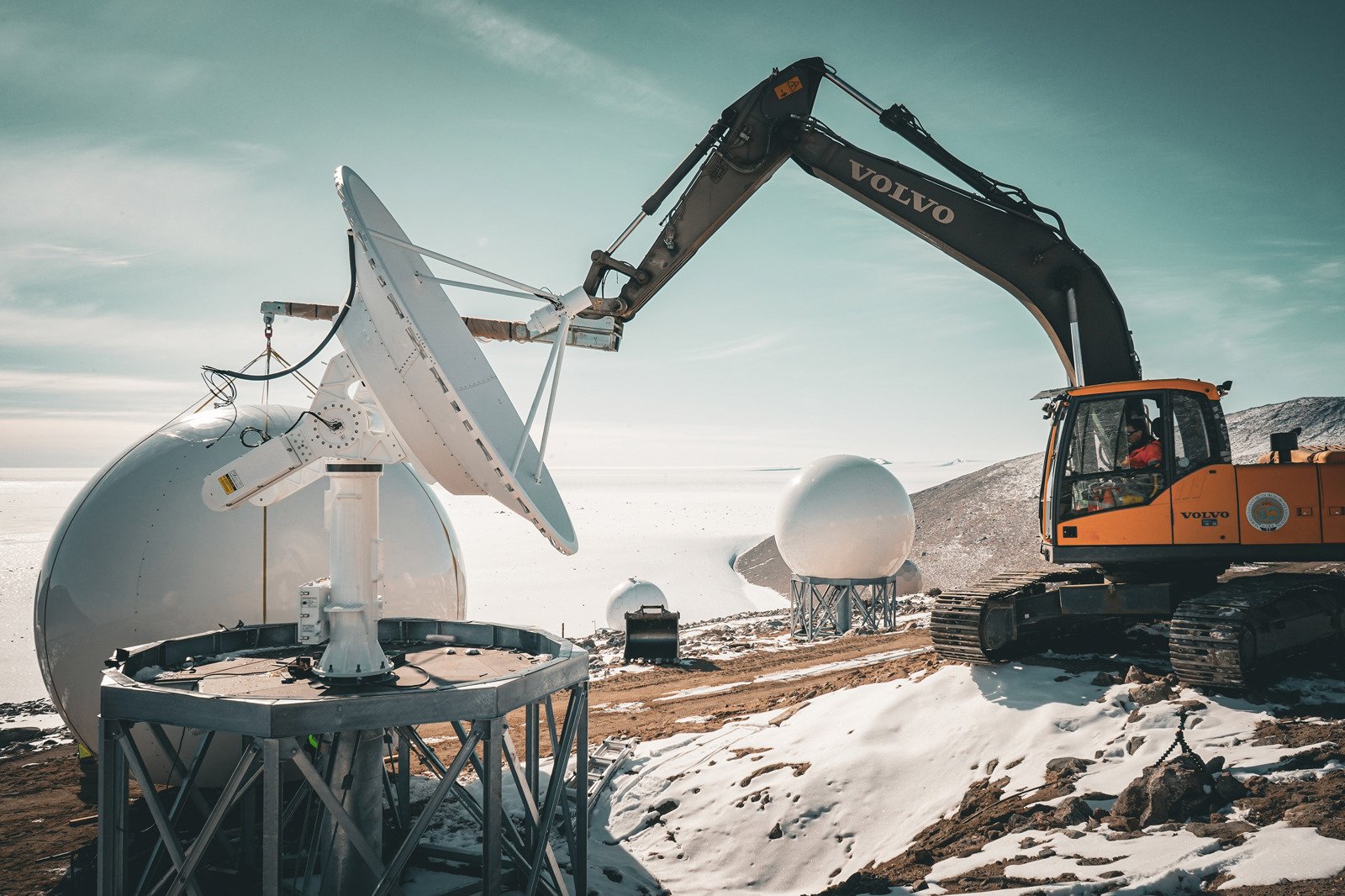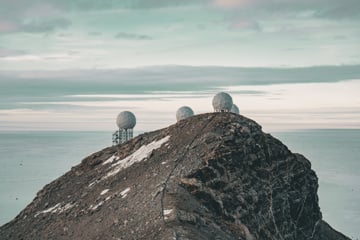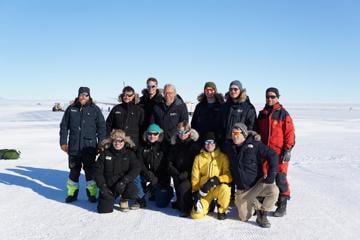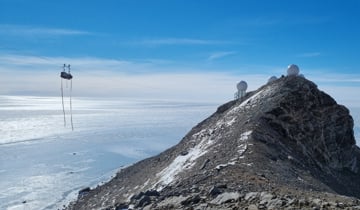This season KSAT is adding another four antennas to the Troll site in Antarctica, making the station the second fastest growing after Svalbard Ground Station. This is system engineer Thomas Rochmann’s fourth season at Troll, so he is already considered a veteran in building antennas in unique conditions.
– The summer season soon comes to an end, and the team will return home in March, when the winter starts here. It’s been a very good season so far, Rochmann says.
Planning is crucial
The antennas are only part of the job. Major improvements have been done on the networking side as well as crucial expansions of the infrastructure.
Most of the logistics and shipping of the necessary parts is done with help of our logistics officer and the Norwegian Polar Institute, that runs the Troll research station all year round, whereas the KSAT team arrives for the summer period.
Planning here is crucial and preparations for the season of 2024 has already started. The antenna parts are shipped in from all over the world before being loaded on a boat and sailed to the ice-edge in Antarctica. From there the goods are transported several kilometres to the station, often in challenging weather conditions.
The crew is flown in by airplane and land on the second largest runway on Norwegian soil, made of several hundred-meter-thick ice and specially prepared by the Polar Institute team upon their arrival.
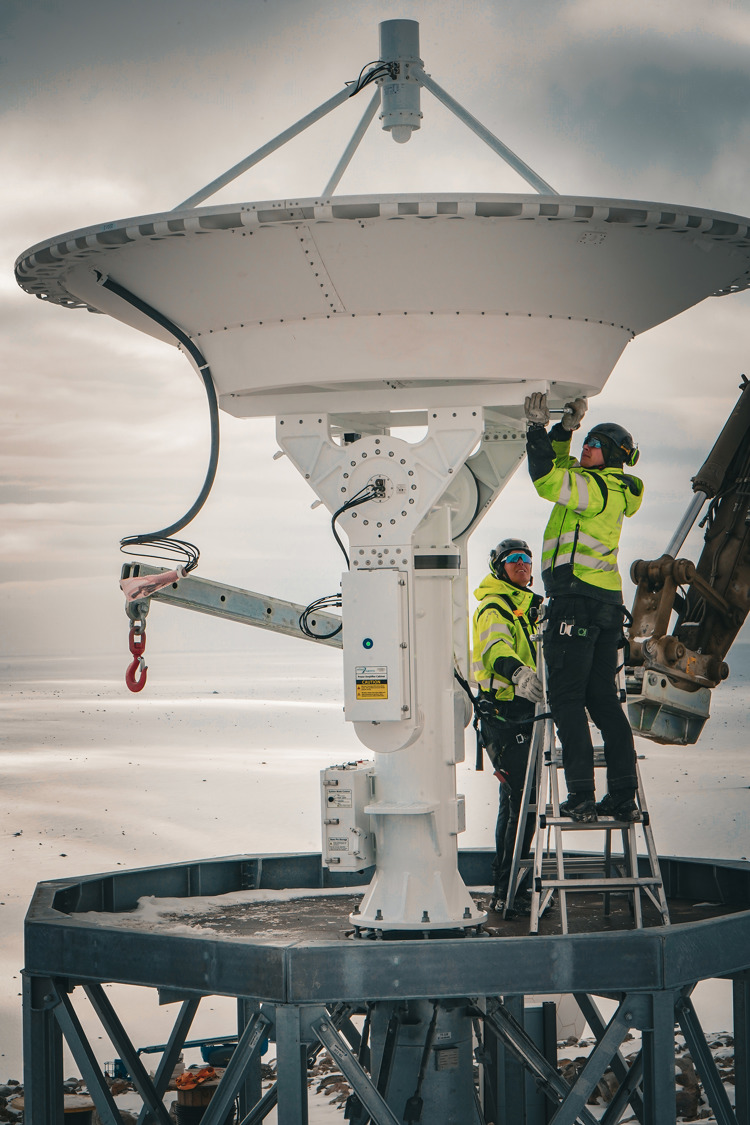
Logistics on another level
When preparing for the season at Troll, you can never be too detailed. A crucial part is to make sure that nothing is forgotten at home. It may be three months between airplanes, and the antennas are built on a very tight schedule.
– It’s critical to ensure we have everything, so you can safely say logistics is taken to another level compared to our other sites, Rochmann says.
There are differences in constructing an antenna in Antarctica compared with less remote places. A lot of the civil works in addition to the foundations and radomes are done by the KSAT team. All the electrical and communications infrastructure is maintained and expanded by the crew during the short summer season.
Leaving no trace
A very important part of the planning is minimalizing our footprint in this protected environment. Whereas logistics to other ground stations often involve boxes and plastic, shipment to Troll station is stripped of all the unnecessary packaging and elements.

Plans for an energy-mix
Another challenge in such a remote place is energy. KSAT is working on adding solar panels to the energy mix at Troll.
– There are of course some challenges, but we are confident we will have the first panels up by next season and be able to scale up from there, Rochmann says.
There are special restrictions to protect the environment under these circumstances. Troll station has a vision of being a clean and green station, and you can’t leave any kind of “leftovers”. We have to be diligent and prepare our vendors on where they are sending the equipment. This means making the shipment as compact as possible with as little waste and unnecessary materials as possible while simultaneously making sure the equipment gets there in one piece.
Extreme weather conditions
The Troll crew carefully evaluates each season- any chance for improvement is important in a such dynamically growing station. You learn to be ready for many possible challenges, including the very unpredictable weather conditions.
The equipment is reinforced and specified to stand up to 300 kph of wind structures, where on other sites they are dimensioned for 220 kph.
– The wind aspect is already considered when the foundations and radomes are designed. We have to take into consideration sand and snow drift, as they wear down the equipment and allows snow to accumulate. The antennas are lifted a few meters from the ground to prevent this, Rochmann explains.
The short summer season at Troll means a lot of hard work to do things on time and to do things right. Not much time is left for leisure activities but with the sun never setting, team members enjoy the occasional hike, cross country skiing and the indoor gym. The food is excellent, according to the team- as the research station’s skilled chef makes sure to keep the menu exciting.
After all, the nearest store is just some 4430 km away.
Photos: Håkon Sørensen, KSAT
